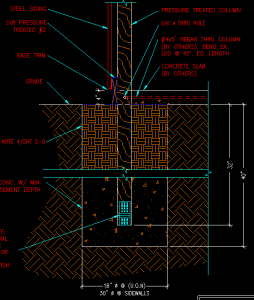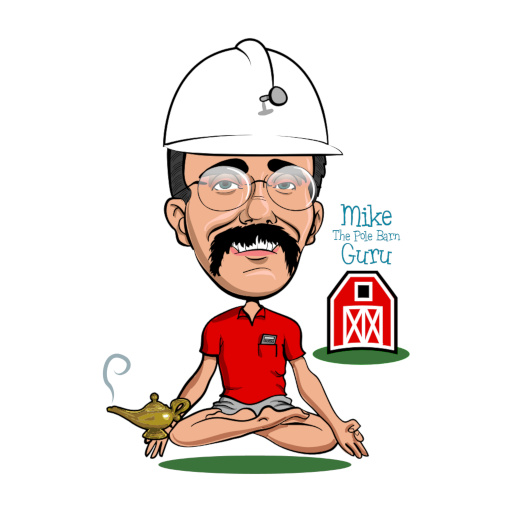Soil Bearing Pressures Challenge
Fast and Loose With Numbers and Terms
DAN from MOUNDS VIEW is the first reader who admits they are an addict to my blogs – for this, I love you man!! Luckily there is no 12 step program to cure you, so you are just going to have to keep feeding the addiction.
Dan called me on the carpet, so I will bring out the Roomba® to clean things up.
Dan writes:
“This message is about an answer you gave to a guy 1-25-18, who asked for an analysis of the post load of his building. And I agree with your answer that he should get a pro to review the design but, why are you playing fast and loose with the numbers to scare him??
 From the data given you came up with 8860 lbs/post, which is OK, but then you didn’t tell him that it results in just 292.9 PSI at the bottom of each center post, which is well under the 2100 psi given soil load. Instead you converted the 292 psi to 42,177 lbs/ft, which technically is correct, just to scare him. However, the post is only 0.21 ft^2, so the max load is still the 8860 lbs.
From the data given you came up with 8860 lbs/post, which is OK, but then you didn’t tell him that it results in just 292.9 PSI at the bottom of each center post, which is well under the 2100 psi given soil load. Instead you converted the 292 psi to 42,177 lbs/ft, which technically is correct, just to scare him. However, the post is only 0.21 ft^2, so the max load is still the 8860 lbs.
The real concern is ”is the 2100 psi” soil rating correct and what is he going to do about the uplift forces? And I agree he needs a footer, but your ”raise the post and pour” can easily do that.
I sent this message this way to keep it off line.
You have so much good stuff in the blog that you don’t need ”tricks” to get the message across.
Dan who’s addicted to reading your blog.”
Mike the Pole Barn Guru responds:
Dan, Dan, Dan – I’ll post just about anything which isn’t profane online, so no problems, we are still friends!
Here is the challenge – soil bearing pressures are to be expressed as pounds per square FOOT (psf), not pounds per square inch (psi) the difference being a factor of 144.
As an example – from the 2015 IBC (International Building Code)
https://codes.iccsafe.org/public/document/IBC2015/chapter-18-soils-and-foundations TABLE 1806.2 the vertical bearing pressure (capacity) of Crystalline bedrock is 12,000 psf or 83.33 psi. The probability of anyone having 2100 psi (302,400 psf) soils would be just below the chances of the Cleveland Browns winning the Super Bowl this year.










Mike,
Thanks for posting my message.
You can use this as an example why folks should seek out and use a RDP when designing a building.
While I am a design engineer, who has limited experience designing and building structures, I am NOT a Civil Eng or a soils engineer,
and when the PO stated his soil load at 1500 PSI, the red flags didn’t go up in my head. And I suspect you saw the 1500 and auto changed it to PSF.
Anyway, hopefully the PO got some help with his design.
And keep the Blog coming, I try to read it every day and usually learn something each day.
Dan
Thank you for all of your very kind words – I write for people like you who have a thirst for knowledge. I know I have learned so much from questions posed to me from folks just like you, and I appreciate every one of them!
Any idea what the PSI is for a 40 by 40 pole barn with a 16 by 40 residential area finished in drywall ?
Design soil bearing pressures are based upon the soil at your site and would be in PSF (pounds per square foot) not PSI. The load to be carried by each column, to the ground, would again be in PSF and would need to include the snow load, as well as dead loads.